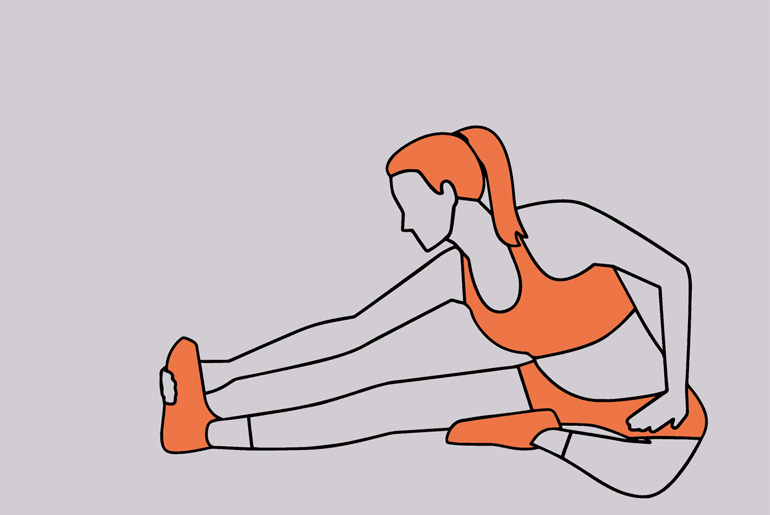Continuous and prolonged periods of work can lead to muscle stiffness, potentially causing pain and discomfort. This stiffness, if not addressed, may pose challenges during exercise, increasing the risk of muscular injuries. To mitigate these issues, it is crucial to incorporate a routine of essential stretching exercises before engaging in regular workouts. Pre-exercise stretches help alleviate muscle tightness, enhance flexibility, and prepare the body for physical activity, reducing the likelihood of injuries. By consistently practicing these stretches, individuals can effectively prevent various types of muscular injuries and promote overall muscle health. It is advisable to consult with fitness professionals or healthcare experts to tailor a stretching routine based on individual needs and fitness levels.
Importance of Stretching:
Stretching is crucial for maintaining overall physical health and well-being, yet many individuals only prioritize it when experiencing discomfort or pain. Regular stretching offers numerous benefits beyond pain relief. By incorporating stretching into daily routines, individuals can enhance the flexibility and mobility of their entire body. Stretching helps to lengthen muscles, tendons, and ligaments, which improves joint range of motion and reduces the risk of injury during physical activities.
Additionally, stretching promotes better circulation, which can alleviate muscle tension and soreness, leading to improved muscle function and overall relaxation. Moreover, consistent stretching routines can enhance posture, increase athletic performance, and contribute to better overall body awareness and mindfulness. Therefore, prioritizing daily stretching exercises is essential for promoting optimal physical health and ensuring the body remains flexible, mobile, and resilient against injury.
Benefits of Stretching:
Stretching exercises offers a range of benefits for the body, both before and after workouts. Here’s an expanded explanation of the mentioned benefits:
Muscle Flexibility:
- Stretching helps eliminate muscle stiffness, enhancing the flexibility of the body.
- Improved flexibility contributes to better joint movement, reducing the risk of injuries during workouts.
- Increased flexibility is essential for activities that require a wide range of motion, such as dancing or playing sports.
Muscle Strengthening:
- Stretching engages and strengthens muscles, enhancing overall muscle tone.
- Improved muscle strength supports better posture and reduces the risk of muscle-related issues.
Enhanced Workout Performance:
- Dynamic stretching exercises before workouts increases blood flow to muscles, preparing them for activity.
- Improved flexibility and muscle strength contribute to better workout performance and efficiency.
Better Balance:
- Stretching exercises, particularly those involving balance, help improve stability and coordination.
- Enhanced muscle flexibility and strength contribute to better balance during various activities, reducing the risk of falls.
Stress Relief:
- Stretching after a workout aid in stress relief by reducing muscle tension.
- Gentle stretching promotes relaxation and helps calm the nervous system, contributing to overall mental well-being.
Improved Posture:
- Stretching exercises that target specific muscle groups can contribute to better posture.
- Addressing muscle imbalances through stretching helps prevent or alleviate postural issues.
Increased Blood Circulation:
- Stretching increases blood flow to the muscles, promoting better circulation.
- Improved blood circulation enhances nutrient delivery to muscles and helps remove waste products, supporting overall muscle health.
Injury Prevention:
- Regular stretching, particularly dynamic stretching, can help prevent injuries by preparing muscles and joints for physical activity.
- Flexibility and muscle strength contribute to better biomechanics, reducing the risk of strains and sprains.
Stretching is generally safe:
Stretching is generally safe and beneficial for overall health, but the key lies in the approach and duration of the stretching routine. The safety and effectiveness of stretching depend on how and for how long it is performed. The ideal duration of stretching can vary based on individual goals and activities. For those engaged in running or gym exercises, a 10-minute stretching routine may suffice to enhance flexibility and prevent injuries. However, if the goal is to improve overall flexibility for daily activities, a more comprehensive 30-minute stretching session may be necessary.
It’s essential to customize the stretching routine to individual needs and fitness levels. Additionally, incorporating dynamic stretching before workouts and static stretching after exercises or as a standalone practice can contribute to better flexibility, mobility, and injury prevention. Consulting with fitness professionals or healthcare experts can help individuals tailor a stretching routine that aligns with their specific goals and overall well-being.
Disclaimer:
The information contained in this article is for educational and informational purposes only and is not intended as a health advice. We would ask you to consult a qualified professional or medical expert to gain additional knowledge before you choose to consume any product or perform any exercise.







